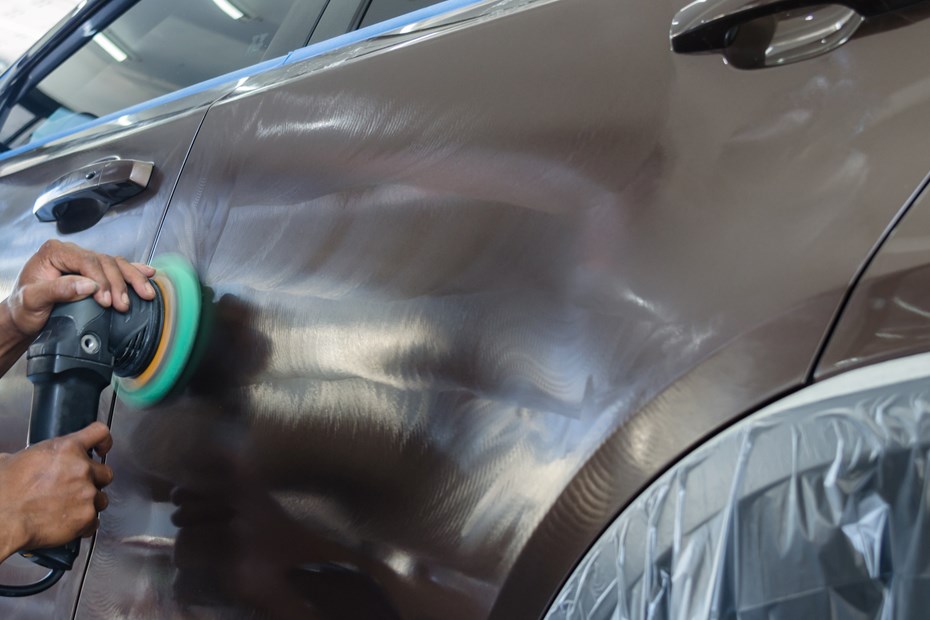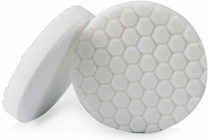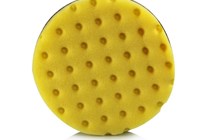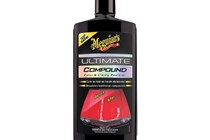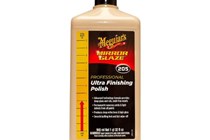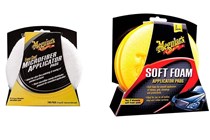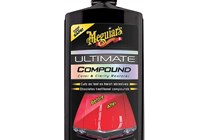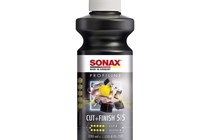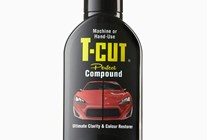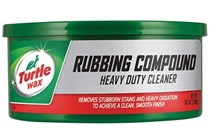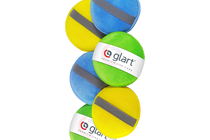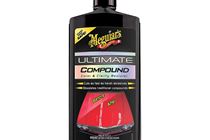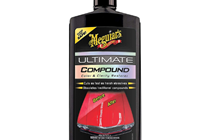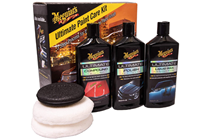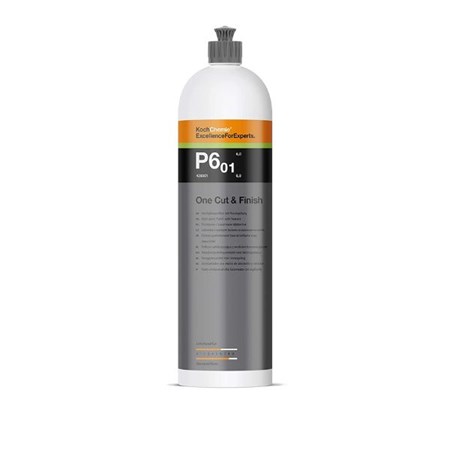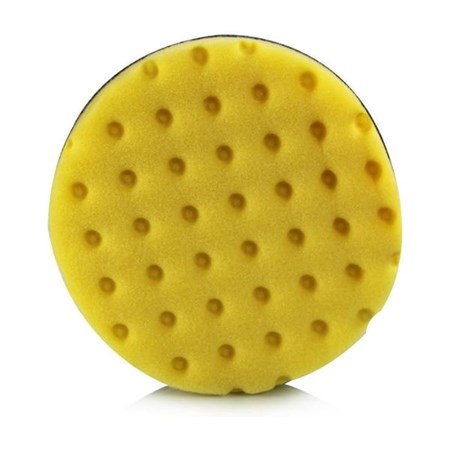Not all car polish is made equally, and at the strongest end of the spectrum lays cutting compound. Designed to cut deeper than a regular polish or clay bar, cutting compound is excellent for dealing with deeper scratches or paint damage, but care must be taken as it’s easier to cause damage to your paint if used incorrectly.
The paintwork on modern cars consists of three layers. The first is the primer, the second is the colour coat, and the final outer layer is the clear protective coat. Minor scratches to car paintwork occur on this outer clear coat, and that’s where cutting compound can be useful.
Cutting compound is an abrasive substance that removes a very thin layer of the clear coat in order to remove the scratches. Just as scratches vary in severity, cutting compounds vary in abrasiveness. We’ll explain more about each shortly.
The best cutting compounds at a glance:
Editor’s choice: Meguiar’s Ultimate Compound – Buy now from Amazon UK
Best all-in-one: Koch Chemie One Cut & Finish – Buy now from Amazon UK
Best for scratches: Farecla G3P101 Premium – Buy now from Amazon UK
The best cutting compounds
Editor's Pick
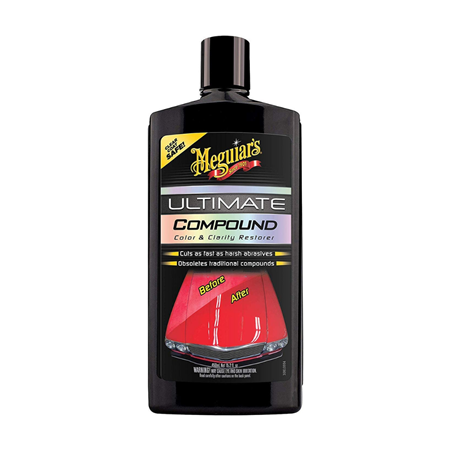

Pros
- Apply by hand or by machine
- Nice level of abrasion
Cons
- Could do with a bigger bottle for the price
Best all-in-one cutting compound and finishing polish
Most all-in-one polishes will feature very weak cutting compounds that will only help remove the very finest of scratches, good for a beginner but not really recommended for properly improving the look of your paintwork. Koch Chemie makes use of a stronger cutting compound here to deliver a deeper scratch removal and provide a super glossy finish.
Pros
- Exceptional results
- All-in-one product for paint correction
Cons
- You'll need some experience to get the most from this product
Best cutting compound for scratches


The flip side is that when used correctly, the results will be jaw-dropping. The ability this compound has to restore paintwork is exceptional, leaving behind a mirror-like shine. Just note that this compound can leave a milky residue when used which will need washing away once you've finished with the polishing machine.
Pros
- Perfect for rectifying scratches
- Excellent value for money
Cons
- Be careful when using this stronger compound
Best cutting compound for hand application


Pros
- Nice level of abrasion
- Best for use on scratches, swirls and oxidising
Cons
- Hand application only
Best cutting compound on a budget
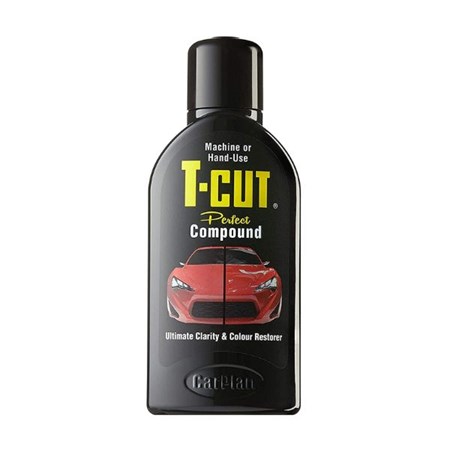

Pros
- Easy for beginners
- Great for light imperfections
Cons
- Not too good on more noticeable blemishes
Best finishing polish


Pros
- Well respected brand
- Easy to apply
Cons
- Not great on bigger scratches
Applying cutting compound
When applying cutting compound (or polish), you can do so by hand or with a polishing tool. We have a full guide on polishing pads, but see below for the best polishing pads for hand and tool use.
Best microfibre discs
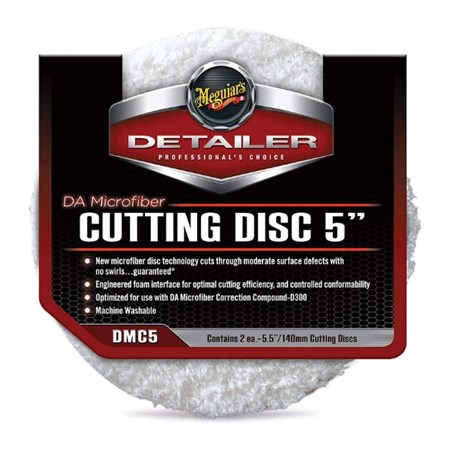

Pros
- Two pairs included
- Machine washable
Cons
- Best not to reuse them too many times
Best finishing pad
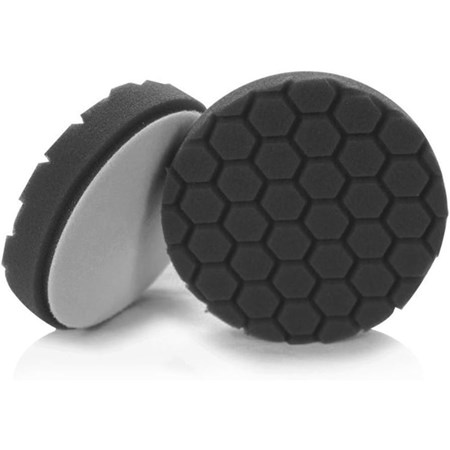

Pros
- Great for maximising shine
- Even spread
Cons
- They need to be regularly cleaned during the process
Best for minimising product use
Pros
- Good for more severe scratches
- Uses less product
Cons
- Velcro fastening could be better
How do I apply cutting compound?
Applying cutting compound or polish by hand is easier but naturally slower than using a polishing machine. But with a polishing tool, you need to be more careful about even pressure because it’s quite easy to overdo it and cause more paint problems. In the case of both, applicators pick up grit and debris during the process and it’s important you rinse the pads frequently, otherwise you might end up adding more scratches.
Following the application of polish, you should buff the paintwork with a clean pad or towel and then add a protective layer of wax or paint sealant. Adding a protective layer is extremely important. Failing to do so will result in your hard work being undone in a jiffy as soon as the paintwork is exposed to sun, weather, and debris.
Cutting compound vs polish
Polish and cutting compounds are both abrasive substances designed to remove imperfections in paintwork but cutting compound is more severe and used more for paint restoration. Polish is much finer, used as a finish for smoothing paintwork and generating a shine – either on its own or after using cutting compound. Polish is what you would use for occasional weekend car detailing sessions.
You may have come across the term rubbing compound too. This lies in between. It’s more aggressive than polish but finer than cutting compound. Rubbing compound is what we would recommend to most people who need something with a little more oomph than their standard car polish without going overboard.
Should you use cutting compound?
In most circumstances, cutting compound is not needed. A regular polishing kit will serve you well. It’ll get rid of light swirls or scratches and make your car shine.
If, for example, you’ve bought a second-hand banger with some sad but not ruined paintwork in the form of oxidisation, fading, or more severe surface scratches, then yes you’ll be wanting some cutting compound. But we certainly don’t recommend using cutting compound often. After all, it removes part of the clear coat and repetitive use will wear it away completely.
It’s also important to point out that deep scratches and paint chips that penetrate through the clear coat and into the colour coat or primer can’t be fixed with cutting compound. This kind of damage requires reapplying primer, colour, and clear coat either yourself or employing a professional.
How to use cutting compound
Using cutting compound is normally a multi-stage process. If the paintwork is in dire need of rejuvenation and you’re beginning with a heavy cutting compound, you would follow this with a medium, a fine, and then a finishing compound or polish. Alternatively, the paintwork may be a bit naff but not too serious and you may be beginning with a medium or rubbing compound instead. Still follow it with a finishing compound or polish. Each stage improves the finish of the paintwork until you are left with smooth, vibrant paintwork.
Chris Williams is an Automotive Content Writer for Parkers and CAR Magazine, but he also contributes to Live For The Outdoors and What’s The Best. He trained as an automotive journalist in New Zealand, prior to which he studied International Relations and History.
Sign up to the Parkers Newsletter to keep up to date with more of the latest reviews, news, and recommendations from the Parkers team.
Just so you know, whilst we may receive a commission or other compensation from the links on this page, we never allow this to influence product selections – read why you should trust us.
Just so you know, we may receive a commission or other compensation from the links on this website - read why you should trust us.


